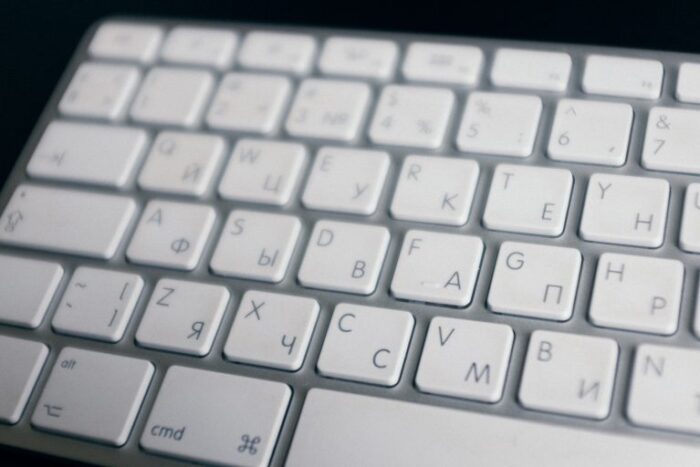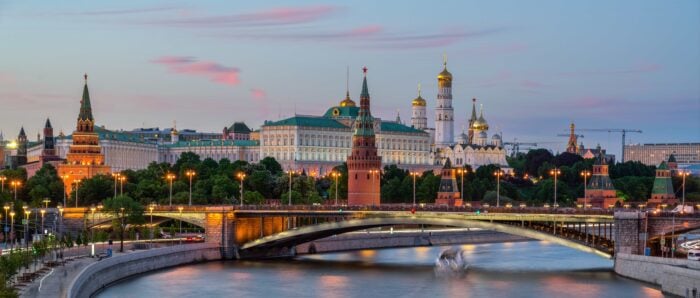Russian Alphabet: Our Complete Guide to Read in Russian
When you study languages like Portuguese, French or German, there is a huge advantage that is easy to take for granted: their words might look unfamiliar, but at least the letters (the very material from which we make words) are just the same.
However, when we learn languages like Russian, there is something else we need to do before we can start learning its grammar and vocabulary. We have to master a new alphabet.
What does this involve? Well, two things. For starters, you’ll need to learn Russian letters and their names. Then, you’ll have to memorise what sounds correspond to every letter.
It might seem like a lot, but it is your first step in the path to becoming fluent in Russian, so we suggest you keep on reading.
To help you, we have come up with an introduction to the Russian alphabet that will teach you everything you need to know if you want to become a Russian speaker.
Table of Contents
- Cyrillic and Russian Alphabet: Are They the Same?
- Russian Alphabet: Key Facts and Differences with English
- The Russian Letters
- Russian Letters that Resemble English Ones
- Russian Letters that Look English but Have Different Sounds
- New Russian Letters and Their Sounds
- Pronunciation Symbols
- Common Questions
- How Many Letters Are in the Cyrillic Alphabet?
- What Is N in Russian?
- Is Russian Read Left to Right?
- How Long Will It Take Me to Learn the Russian Alphabet?
- Start Writing in Russian!
Explore our Russian courses with qualified native speakers in your city or online!
Cyrillic and Russian Alphabet: Are They the Same?
Though they are sometimes used as synonyms, they are not the same. Cyrillic refers to a type of alphabet that is shared by many languages. The Russian alphabet, on the other hand, is just one of several related, similar-looking Cyrillic alphabets. But since it is the most popular Cyrillic writing system, people often assume that these two are one and the same.
Russian Alphabet: Key Facts and Differences with English

Photo via Flickr
This alphabet has an inventory of 33 letters, as opposed to English, which only has 26. Surprisingly, Russian has a lot more vowels. While English only has 5, Russian has 10 (а, е, ё, и, о, у, ы, э, ю, я). Then, there are 21 consonants and 2 silent signs.
It might seem like a challenge, and it is. But learning the Russian alphabet will open a whole new world for you!
Besides, there are a few advantages. Though you might not see it at first sight, many Russian letters actually resemble the ones we use in English, Spanish or French, for example, T, M, K, O, A.
The bad news is that there are also a few problematic letters like H, P, X and Y. These symbols look exactly like Latin script, but they have completely different sounds. Then, of course, there are Russian letters like Б, Ы, Г, Д, Ш, or Щ, which are totally alien for people who only know the Latin ABC.
How can you become acquainted with these unfamiliar Russian characters? Easy. By associating them with the shape of common objects. For example, doesn’t Ш look just like a fork?
Some of them even look like Latin letters! Я totally looks like a reversed R, doesn’t it?
More great news? Russian capital and non-capital letters look almost the same. Let’s see an example.
Capital letter: Б
Lower case: б
The Russian Letters
Now that you know the basics of the Russian alphabet, let’s have a look at 33 letters in detail.
Russian Letters that Resemble English Ones
А а – Pronounced like the “a” in the “far” or “scar”. It is not the open, smiley “a” sound you can hear in words like “fat” or “man”.
К к – Pronounced like the “k” in “kettle” or “kilometre”. This character replaces the English “c” sound in words like “camp”.
М м – Pronounced like the “m” in “marry”.
O o – In stressed syllables, it’s pronounced like the “o” in “sore”. If it is unstressed, its pronunciation is closer to that of an “a”.
Т т – Pronounced like the “t” in “tart”.
Russian Letters that Look English but Have Different Sounds
These are the trickiest to learn, so pay attention!
В в – An equivalent to the English letter v, this Russian letter is pronounced like the initial sound in “vase”.
Е е – Pronounced like the “ye” in “yell”.
Н н – An equivalent to the English letter “n”, this Russian letter is pronounced like the initial sound in “nose”.
Р р – Similar to the “r” in “risk”, you have to roll your tongue to make this one sound truly Russian.
С с – Similar to the “s” in “see”. It might be helpful to remember that this letter is used in the same way the “c” is used in the English words “central” and “cinnamon”.
У у – Pronounced like the double “o” in “look” or “spooky”.
Х х – Pronounced like the “h” in “ham” in most contexts, it is sometimes stronger, more like the “j” in the Spanish word “jamón” (ham) or the “ch” in the German name “Bach”.
Russian Letters that are Easier than They Look
Б б – Equivalent to an English B, it’s pronounced like the bilabial consonant in “boom”.
Г г – Equivalent to an English G, it’s pronounced like the hard consonant in “go” or “get”.
Д д – Equivalent to an English D, it’s pronounced like the consonant in “dad”.
З з – Equivalent to an English Z, it’s pronounced like the “z” in “zoo”.
И и – Sometimes equivalent to an English I, it is often pronounced like the “i” in “cabin”.
Л л – Equivalent to an English L, it’s pronounced like the “l” in “laugh”.
П п – Equivalent to an English P, it’s pronounced like the bilabial sound in “park”.
Ф ф – Equivalent to an English F, it’s pronounced like the labiodental consonant in “fluff”.
Э э – Pronounced like the “e” in “met”.
New Russian Letters and Their Sounds
These sounds will be familiar, but they don’t have their own letters in our language.
Ю ю – Similar to the “u” in “university”. (It sounds much like the English pronoun “you”).
Я я – Similar to the “ya” part in “yard”.
Ё ё – Sounds “yo” similar to the sound in “yacht”. (Note: Nowadays, you may find this character simply written as Е е.)
Ж ж – Similar to the sibilant S in “pleasure” or “measure”, this sound is sometimes represented in English as /zh/.
Ц ц – This one sounds like the “ts” sound in “meets” or “puts”.
Ч ч – Pronounced like the “ch” in “chalk” or “chant”.
Ш ш – Pronounced like the “sh” in “sherry”.
Щ щ – This one is pronounced like “sh”, but your tongue has to be in the same position it is when you say “ch”, so a good way of practising this one is say “ch” and “sh” intermittently trying not to change the position of your tongue.
Ы ы – Pronounced like the short I sound in “pit” or “kit”. (Tip: your tongue needs to go further back in your mouth than it would for its English counterpart.)
Й й – This character is used to form diphthongs. For example, “oй” is like the “oy” part in “toy”, and “aй” is like the “igh” in “high”.
Pronunciation Symbols
These signs have no sound on their own, but they are still considered part of the Russian alphabet.
Ъ ъ – The ‘hard sign’ indicates that there is a pause between syllables, but it is rarely used.
Ь ь – The ‘soft sign’ indicates that the previous letter is ‘soft’. Think of the “p” sound in the word “pure”, or try to produce a very slight “y” sound onto the letter before it.
Common Questions
Now that you know how to write and pronounce Russian letters, let’s delve into the most burning questions about the Russian alphabet.
How Many Letters Are in the Cyrillic Alphabet?
Like we said before, there are 33 letters in the modern Russian alphabet. 10 of them are vowels, while the rest are 21 consonants and 2 symbols (hard and soft) that have no sound of their own.
What Is N in Russian?
The equivalent of “N” in Russian is Н н. It’s pronounced like the “n” in “nun”. On the other hand, Russian И и is pronounced like the “i” in “taxi” A very common word with inverted N is Привет = Hello.
Is Russian Read Left to Right?
Yes. Russian is read left to right, just like English. This makes reading Russian texts much easier than Arabic ones, for example.
How Long Will It Take Me to Learn the Russian Alphabet?
It should take you about three to four hours to learn the Russian alphabet. Though your mileage may vary, it is perfectly plausible that you learn to read Cyrillic during your flight to Russia, for example.
Start Writing in Russian!
Now that you know the basics of the Russian alphabet, it’s time to get your hands dirty and begin practising!
A great start would be to learn how to write your name using Cyrillic. To get you started, you can use these popular Russian names as a model:
- Anna: Анна
- Tom:Том
- John: Джон
- Ivan: Иван
- Natasha: Наташа
- Felix: Феликс
My name in Russian is spelled Хуан, how about yours? You can use this virtual Russian keyboard to practise and share your results in the comment box below!
But if just knowing the Russian alphabet doesn’t cut it for you and you’d like to master the language while learning all there is to know about the Russian culture, try Language Trainers! We provide personalised Russian lessons with qualified native speakers for all levels both online and in person. Visit our website now and explore our Russian courses taught by native teachers!
Explore our Russian courses with qualified native speakers in your city or online!


